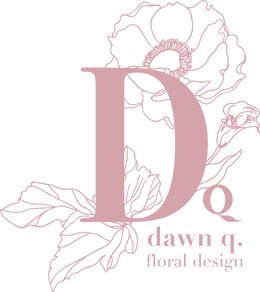
15 Edible Flowers and Their Unique Flavours
You've probably had enough of people asking you if you know cauliflower and broccoli are actually flowers. The simple answer is yes, they are – but there are tons of other flowers that are also edible and make wonderful ingredients!
The truth is, flowers have been embraced in cooking for centuries, transcending regions and cultures including Chinese, Middle Eastern and Indian cuisines. These foraged additions not only look beautiful but also bring with them a unique set of flavours and qualities. This article explores 15 of such flowers, showcasing their botanical charm and culinary versatility.
Factors to Consider Before Consuming Flowers
While the flowers listed here are generally edible, it’s critical to note that not all varieties are safe for consumption. Additionally, certain flowers may contain toxic parts that should be avoided, like the honeysuckle mentioned later in this article.
It’s also wise to steer clear of ingesting flowers gathered from unknown outdoor sources or bought from nurseries or florists, as they may have been exposed to chemicals. The safest option is to enjoy flowers you’ve cultivated yourself, or the ones that are offered and sold as edible!
1. Rose

The queen of flowers graces us with a spectrum of colours, but did you know it also offers a diverse range of flavours? From sweet to spicy, its floral profile enriches teas, salads, cakes, spreads and more. Select darker-coloured rose petals for more intense flavours in your edible creations.
2. Lavender

Bakers adore lavender for their unique fragrance and sweetness. Their floral pungence makes them stand out in pastries and confections like macarons, ice cream and éclairs. Dissect lavender enough on your tongue, and you might even catch hints of mint and lemon.
3. Hibiscus

Hibiscus flowers are renowned for their palatable blend of tartness and sweetness. Compared to the likes of cranberries and raspberries, the parts often employed in culinary applications are primarily the sepals – the protective outer structures of the flowering bud. Nevertheless, whole hibiscus flowers lend a stunning presentation to beverages, especially cocktails that call for a citrusy punch.
4. Chrysanthemum

Most of us are familiar with chrysanthemum tea, an aromatic and lightweight flower-infused beverage that is as refreshing as it is cooling. However, specific classes of these vibrant blooms are also used in dishes such as salads. It is said that their flavours can vary widely, from sweet to sharp and bitter to spicy.
5. Peony

Peonies offer a romantic flair to bouquets but their petals can, too, make a surprising and delightful accoutrement to salads and cocktails. Reflecting their appearance, these herbaceous perennials bring with them a sweet and mellow character with a gentle underlying woody essence.
6. Sunflower

More than the seeds of the sunflower are edible. In fact, all varieties, and all parts of this annual herb are safe to eat, from its verdant leaves and bright yellow petals to its long stems and even fibrous roots. Consider sautéing unopened sunflower buds or straining petals through hot water to make jelly. These cheerful flowers boast a faint nutty taste and grassy notes that provide a piquant bittersweet contrast to various recipes.
7. Pansy

Pansies are charming flowering plants that are eye-catching and memorable. Imagine incorporating these delicate blooms as garnish into your appetisers or desserts for an artisanal touch. Besides imparting a pop of colour to dishes, these cultivated varieties of viola effectively perfume with their pleasant and green odour.
8. Lilac

Lilacs put on a spectacular show in springtime as woodland flowers with gorgeous pastel blossoms. But just one stem of this lovely plant is enough to enhance the flavour and visual appeal of your culinary creations. Slightly bitter but light and fragrant, lilacs can be used in anything from syrups and jellies to cakes, or simply candied.
9. Marigold

Marigold has a relatively polarising flavour, despite being a garden favourite. The radiant red, orange and yellow blooms are described as having a tarragon-like taste, mildly bittersweet with a mixture of citrus, pepper and vanilla. Critics may suggest that its taste is so medical that it is commonly used as a pest deterrent in gardens. But paired with the right ingredients, its unique profile is precisely what makes it so interesting when featured in sandwiches, fritters and cheesecakes!
10. Scented Geranium

Originating from South Africa, scented geraniums are distinguished from traditional geraniums by their fragrant foliage. Their aromatic properties come in a rainbow of scents, including apple, ginger, hazelnut, orange, lime and cinnamon, mainly residing in the leaves. Versatile and easy to use, scented geranium leaves only need to be washed with water. They’re frequently added to pound cakes and lemonades for their invigorating and complementary scents.
11. Honeysuckle

The honeysuckle contains nectar and pale blossoms with a sugary, floral taste. As its name suggests, honeysuckle has a taste similar to honey. Use these parts for teas, syrups and even remedies for sore throats. Do note that honeysuckle berries are poisonous, especially when consumed in large quantities.
12. Carnation

The popular Mother’s Day flowers can be eaten? What in carnation! Unbeknownst to many, the elegant and profound carnation flower petals can be transformed into a variety of sophisticated goods. These include French liqueur Chartreuse and candied carnations adorning refined desserts. Also known as dianthus, these flowers have a sharp and sweet undertone that can be enchanting when used sparingly. It’s essential to remove the base of the petals as they are the source of their bitter flavour.
13. Chamomile

Apart from tea, chamomile flowers, edible members of the daisy family, can also be used in recipes from cookies to crepes and popsicles. Harvest whole flowers to infuse the gentle, clean and herbal qualities of chamomile while bestowing its soothing and healing properties into your food and drink.
14. Mint

While most gardeners know mint as a popular and undemanding evergreen herb prized for its leaves, it’s worth noting that flowering mint plants can still be utilised. Although blooming mint plants may reduce the flavour intensity of leaves, the flowers themselves offer a similar minty sensation with nuanced overtones. Balance rich bakes such as chocolate cakes and creamy cheesecakes by incorporating sprigs of mint flowers for an appealing and refreshing change.
15. Nasturtium

Nasturtiums are stunning, sun-loving annuals available in a beautiful assortment of warm colours. Much like their radiant appearance, their flavours can penetrate salads and proteins with a delicious blend of sweetness and pepperiness akin to watercress. Every part of nasturtiums is edible. Their versatility, delicious taste and high nutritional value crown them as one of the best edible flowers available today.
Final Thoughts
Exploring the world of edible flowers not only injects botanical charm to culinary endeavours, but also unlocks a realm of unique flavours and culinary possibilities. While the 15 flowers highlighted here offer enticing tastes and aromas, it’s important to always exercise caution and discernment when selecting and preparing flowers for consumption. Remember, not all flowers are safe to ingest, and some may contain toxic parts.
Although Dawn Q doesn’t provide flowers for cooking and eating, our floral collection showcases a diverse array of blooms ideal for celebrating and commemorating special occasions in a different manner. Featuring classic roses, vibrant sunflowers, elegant peonies, and timeless carnations, our selection of flowers and arrangements surpasses expectations in quality and creativity. Rather than presenting them for consumption, we invite you to revel in their delightful scents and captivating beauty instead.
Explore our range now, or learn more about flowers with us here!



